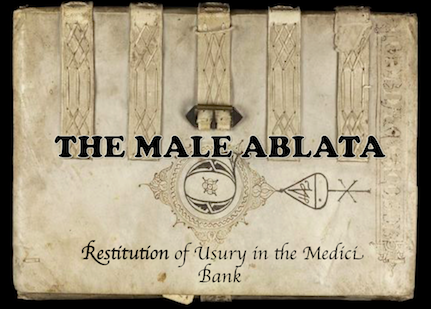The Omeka Project - Introduction
As explained above, the project presented here on Omeka is merely a fragment of a larger thesis project. However, it is an important step in terms of both data acquisition and data visualization. This Omeka exhibit is designed to help visualize the locations of the artworks commissioned by the Italian bankers as restitution and the visual dialogues between them. The objective is to help visualize how, where, and in which sequence the restitutionary artworks emerged in Florence, where they were located in relation to each other, which monastic orders had they most frequently been donated to, how the earlier works may have influenced the later ones, and how the frequency of their appearance has changed throughout time.
The final goal of this project is to create a neatline exhibit where a map would connect the churches, monasteries, and other (mostly) religious institutions in which the bankers' religious commissions were displayed and a timeline would highlight their temporal correlation to each other. Moreover, the Basilica of Santa Croce, which is the original location of the Novitiate Altarpiece, will appear on the Neatline map as a 3D model designed through sketchup, which will be discussed in the section below.
In order for the map and the model to be easily readable and to make sense in the broader historical context, a timeline will be added to the Neatline exhibit. It will place the artworks presented inside the Santa Croce and on other points of the map in a chronological framework and help observe certain trends and patterns in the commissions, such as the increasing favor of Franciscan and Dominican institutions by the bankers and the emergence of themes such as the Adoration of the Magi and the Coronation of the Virgin as the most popular topics of the bankers' commissions.
The point is for the visitors of my exhibit to be able to experience those artworks like a fifteenth-century visitor to Florence would: in their proper context and without an overarching narrative guiding them as they are walking around the town. I have marked certain points on the map, yet I have deliberately left them disconnected in order to ensure that anyone could construct their own narrative depending on the sequence in which they click on the buildings. In the "Introduction to the Thesis" section, I have outlined my basic arguments regarding this map, and in each individual record on the map I have provided brief background information for the buildings represented. However, despite the background that I provide and the arguments that I present before I introduce the viewers to the map, I still believe that the most important aspect of this map is the lack of an assigned direction, a chance for the viewer to wonder around Florence like Cosimo de' Medici's contemporary would, and to make up one's opinion about the bankers, their commissions, and their intentions regarding those comissions organically.The main objective of my thesis is for the audience to understand the way the bankers wanted to be perceived by their fellow Florentines through their commissions and the way these commissions may have been received by the bankers' contemporaries. Hence, this exhibit is designed as an experiment to let any person who does not know any of the bankers personally and has only very general knowledge about them (any fifteenth-century Florentine would have some superficial knowledge of his or her city's wealthiest residents and any visitor of my exhibit will get that basic information from my textual supplements) to see the commissions in their original context and percieve them in the conversation with each other, as was intended by the patrons.
Therefore, while I provide a geographic and chronological framework for the exhibit visitors, and while I suggest one way to look at these commissions in my "Introduction to Thesis" section, my main method of instruction is hands-on exploration, for that is how the bankers had their works perceived in the fifteenth-century Florence that I am trying to recreate visually.
